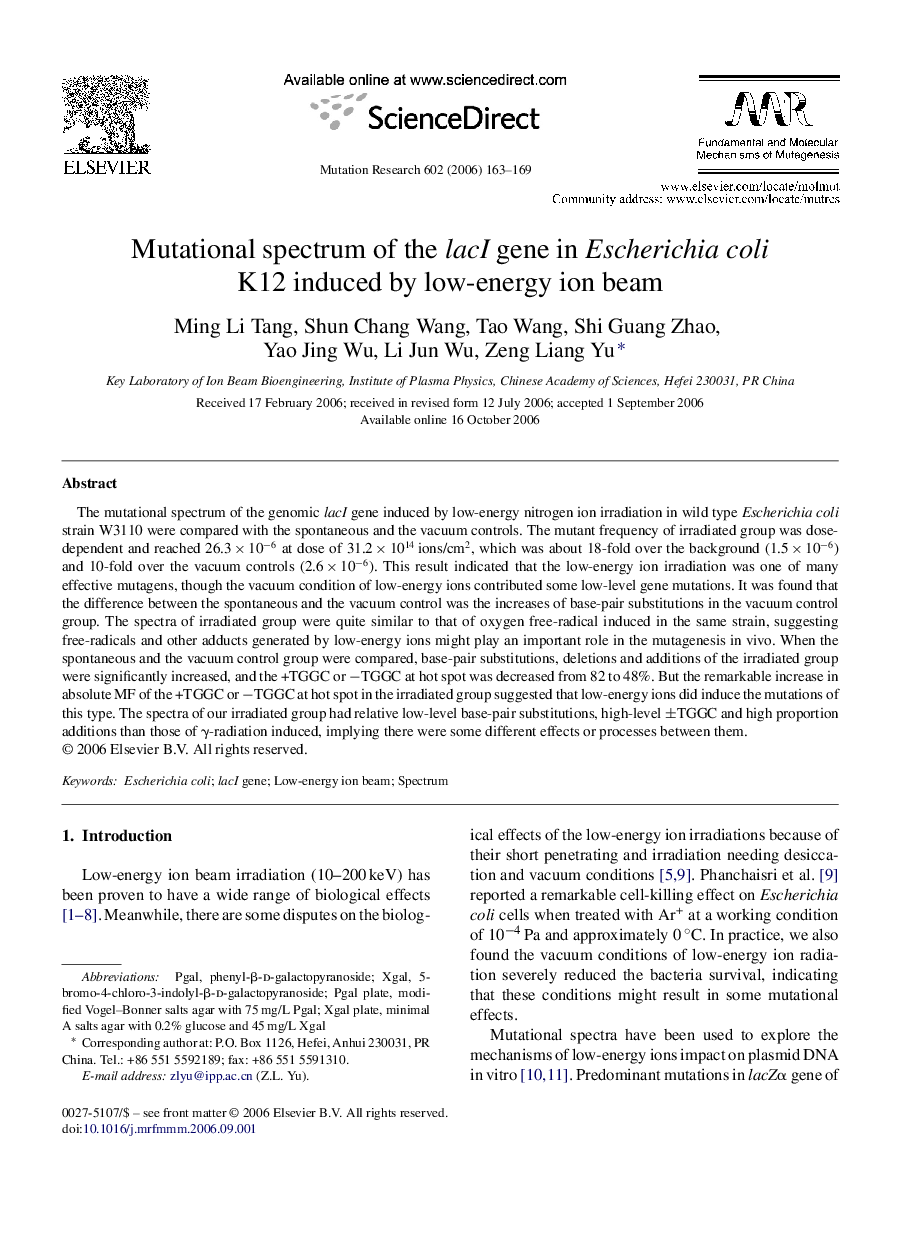| Article ID | Journal | Published Year | Pages | File Type |
|---|---|---|---|---|
| 2147412 | Mutation Research/Fundamental and Molecular Mechanisms of Mutagenesis | 2006 | 7 Pages |
The mutational spectrum of the genomic lacI gene induced by low-energy nitrogen ion irradiation in wild type Escherichia coli strain W3110 were compared with the spontaneous and the vacuum controls. The mutant frequency of irradiated group was dose-dependent and reached 26.3 × 10−6 at dose of 31.2 × 1014 ions/cm2, which was about 18-fold over the background (1.5 × 10−6) and 10-fold over the vacuum controls (2.6 × 10−6). This result indicated that the low-energy ion irradiation was one of many effective mutagens, though the vacuum condition of low-energy ions contributed some low-level gene mutations. It was found that the difference between the spontaneous and the vacuum control was the increases of base-pair substitutions in the vacuum control group. The spectra of irradiated group were quite similar to that of oxygen free-radical induced in the same strain, suggesting free-radicals and other adducts generated by low-energy ions might play an important role in the mutagenesis in vivo. When the spontaneous and the vacuum control group were compared, base-pair substitutions, deletions and additions of the irradiated group were significantly increased, and the +TGGC or −TGGC at hot spot was decreased from 82 to 48%. But the remarkable increase in absolute MF of the +TGGC or −TGGC at hot spot in the irradiated group suggested that low-energy ions did induce the mutations of this type. The spectra of our irradiated group had relative low-level base-pair substitutions, high-level ±TGGC and high proportion additions than those of γ-radiation induced, implying there were some different effects or processes between them.
